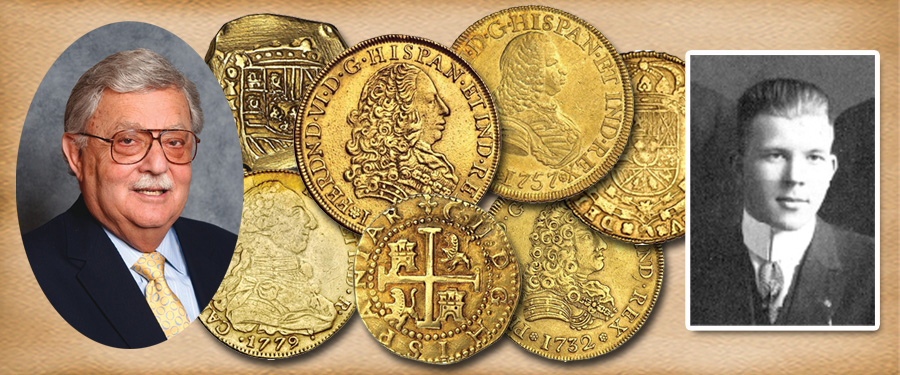
Sometimes forces interfere with a collector’s
desires and plans that are not in the collector’s control or even in the
control of the hobby. This happened during the time frame when Stack’s was
instrumental in building the J.K. Lilly Collection. During the post-World War
II years and even into the 1960s, some gold coins issued were found to be
counterfeits.
Counterfeiting has been done almost from the first
day metal was used for coinage. There was always someone willing to make a
quick profit by adding base metal such
as copper or even silver to gold, copying a coin design and making something
that looked like the “real thing.”
Demand for gold for various reasons led to an
industry developing overseas after the Second World War. Places like Milan and
Florence in Italy, and Beirut in the Middle East, copied the designs of many
popular gold
coins and sold them to unknowledgeable
collectors, tourists and the
jewelry industry at a substantial profit above the intrinsic value of the coin. As the demand increased,
so did the shipments made to
the United States; the supply seemed endless. The American market was being
ripped off because many buyers
did not know the difference. The designs were so well reproduced that the coins
were bought and sold as if they were genuine. Thousands of people were being
fooled. Since the United States Secret Service was busy with counterfeit paper
currency and received complaints only after the false coins were discovered, enforcement was difficult.
To help stop the importation of counterfeit coins,
in 1960 the Office of Gold & Silver Operations (OGSO) was empowered to try
to stop the
false coins before they entered the
United States. The OGSO started a licensing procedure, requiring a license to
import gold coins, issued by that Department of the U.S. Treasury. Before a
gold coin could be carried into the United States or received in this country
by mail, it had to receive a license. From day one the procedure caused delays,
and loss of sales, but it was somewhat
effective in stopping the importations. However it was burdensome and
restrictive to all involved.
Buying a gold coin from overseas became a much more
difficult project. Collectors needed to know if they could get a license to
bring their purchases into the United States before they bought coins. If they
purchased coins before having a license, they could be denied and the coins
could not be brought into the country. How could buyers know what would be
admitted? Hand-carried packages were examined and sometimes confiscated and
held at customs houses if there was not an appropriate license. Items that
came by mail could be held at the post office. While the importation of counterfeits was slowed — a good thing for
all — the burden on collectors and the numismatic hobby was great. A
collector, seeing a coin in a price list or auction, had to ask the seller to
hold it until a license could be acquired. It was virtually impossible
to get a supply into the country.
This
made it difficult to add to a collection such as the one that J.K. Lilly was
trying to build. In one particular instance Stack’s ran up against these
licensing difficulties when a large numismatic gold coin collection was offered
to the firm in 1962. The collection, comprising over 900 different coins of the
world, would require months to get the appropriate license. Stack’s finally
lost the opportunity to offer it at public auction, since the consignor was
sick and would not wait.
The
loss of this overseas collection, together with other business problems
resulting from the license requirement caused Stack’s to sue. The problem was
that the rules defining what could or would be licensed were never revealed by
the OGSO, but the decisions were made at their sole discretion. Stack’s sued
that the OGSO licensing requirements were Arbitrary and Capricious because they
kept their rulings to themselves. Being a government agency the OGSO made the
determinations on their own. It took till 1967 to win the case. A member of the
Treasury Department announced the removal of the licensing requirements at a
PNG meeting, explaining, “the intent of the law had been satisfied”
The
restrictions did great harm to coin collecting and even to jewelers. However, at Stack’s we always did our best to
meet the needs of our clients, including Mr. Lilly.





